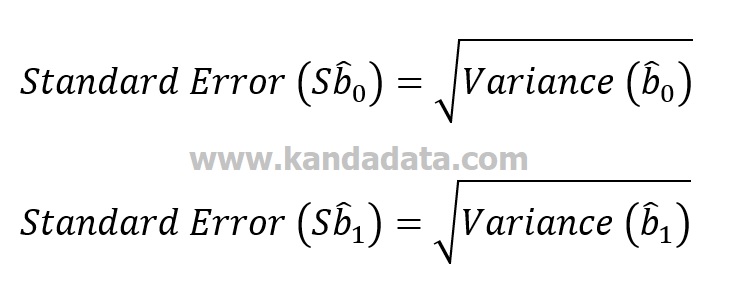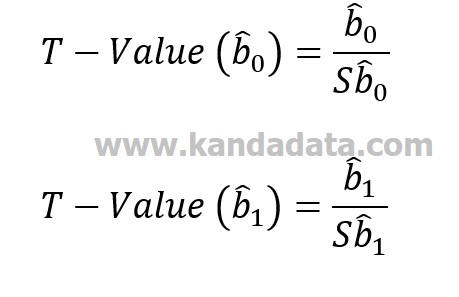Calculating the value of variance, standard error, and t-value is the last stage in simple linear regression analysis. The variance value can be calculated if the estimate of the variance of u has been calculated. The value of estimate of the variance of u cannot be calculated if it has not calculated the value of the sum of residual squared.
Therefore, I wrote this article to complete the tutorial on how to calculate simple linear regression analysis. You can first see my article entitled: “How To Calculate The Analysis Of Variance (ANOVA) Table In Simple Linear Regression.”
In this article, I will also use the same research data. If you haven’t read it, please read the article first until it’s finished.
How to Find Variance Value
To calculate the value of the variance, you must first calculate the value of the estimate of the variance of u. The formula for calculating the estimate of the variance of u refers to the book written by Koutsoyiannis (1977), which can be seen below:

Based on the estimate of the variance of u calculation formula, you must have calculated the sum of residual squared values. Based on the calculation results, the value of the residual squared sum is 52.835.
Furthermore, the number of observations (n) = ten and the number of variables (K) = 2. After calculating using this formula, the estimate of the variance of u = 6.604 is obtained.
The variance value in simple linear regression was calculated for bo and b1. The formula for calculating the variance value refers to the book written by Koutsoyiannis (1977), which can be seen below:

Based on the above formula, the estimate of the variance of u is used to calculate the value of the bo variance and the b1 variance. The calculation results of the bo variance value obtained a value of 6.8907, and the value of the b1 variance obtained a value of 8.7699.
How to Find Standard Error
The standard error value can be calculated if the variance has been obtained. The formula for calculating the standard error value refers to the book written by Koutsoyiannis (1977), which can be seen below:

Based on the calculation formula above, the standard error is the square root of the variance. Based on the calculation results, the standard error value of bo is 2,625, and the standard error value of b1 is 2,961.
How to Find T-Value
Calculating the T-value takes the estimated values of b0, b1, and the standard error bo and b1. In detail, the formula for calculating T-value refers to the book written by Koutsoyiannis (1977), which can be seen below:

The result of calculating the T-value for the intercept (bo) is 83.194, and the T-value for b1 is -6.604.
Correction of Calculation Results
You can perform data processing using statistical software to correct the calculation results. I have done a simple linear regression analysis using SPSS. SPSS output for a table containing standard error values and T-values can be seen in the image below:

Based on the SPSS output, we compare the results of our calculations. If the calculation result is the same as the SPSS output, it means that there is no calculation error.
After I checked the calculation results above and then compared it with the SPSS output, I concluded that the estimate of variance, standard error, and T-value were correct.
Conclusion
How to calculate simple linear regression analysis using excel I have written in 5 parts. This article is the 5th part. Sequentially the articles part 1 to part 4 are:
1. “Article Part 1.”
2. “Article Part 2.”
3. “Article Part 3.”
4. “Article Part 4.”
You can create calculation templates using excel. You only need to change the data to be analyzed (without changing the row and column positions with the formula), then the results will automatically appear. Before compiling a calculation template with excel, I suggest you compare it with statistical software output using the same data.
Well, that’s the tutorial article this time. Hopefully, it’s useful. Wait for the next latest article update with other valuable topics.


[…] The t value in simple linear regression can be calculated manually or using statistical software. For manual t-value calculations, you can read my article entitled: “How to find the variance, standard error, and t-value in simple linear regression.” […]